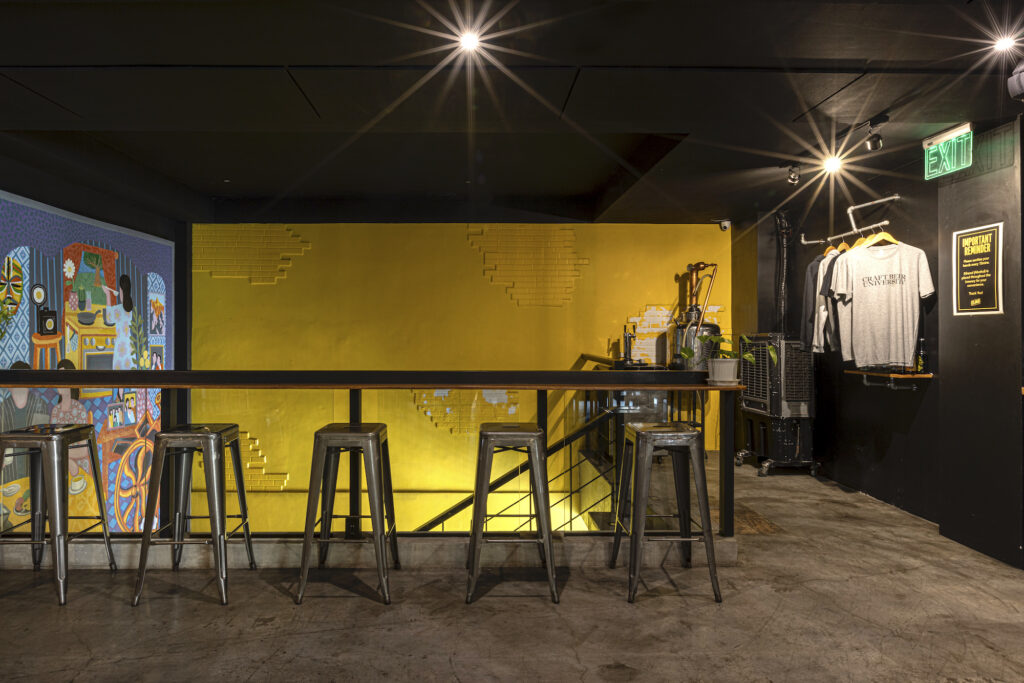Certified beer sommelier Raoul Masangcay is in California for work while his brewery Elias Wicked Ales and Spirits is in Quezon City. But distance hasn’t been an issue
Software engineer Raoul Masangcay understands well the power and potential of technology and how the cloud can help him run his business from halfway across the world. He’s currently based in California and his brewery Elias Wicked Ales and Spirits is in Quezon City.
Elias Wicked Ales and Spirits produces 30 different types of craft beer, ciders, and seltzers with some going on to win awards. The Hop Boi (a West Coast style IPA made with six varieties of American hops) and the Suppa Fly (an IPA that uses Belgian yeast with low notes of caramel) won the American Style IPA bronze medal and the Chairman’s Selection respectively at the Asia Beer Championship in 2021.

This is no surprise as Masangcay’s passion for craft beer led him to taking up a brewing science course in UC Davis. He is a certified beer judge and the Philippines’ first certified cicerone (beer sommelier). “I took those certifications so I can know if my beer is good or not. If you only give it to your friends and family, they will just keep telling you it’s good,” says Masangcay.
Raoul Masangcay’s passion for craft beer led him to taking up a brewing science course in UC Davis. He is a certified beer judge and the Philippines’ first certified cicerone (beer sommelier).
He opened Elias Wicked Ales and Spirits back in 2018 while he was in the Philippines. “I was lucky to be able to hire brewers. I was able to train them in the three years that I was there. I knew I was going to move back to the US eventually so it was important for me to transfer the knowledge and recipes to them,” he says.
Masangcay was present for most of the pandemic and was able to navigate his team through the harder parts of lockdowns and liquor bans, even turning his machines to making ethanol alcohol, which they donated to hospitals at one point. He then moved back to the US in November 2020 for work.
Cheers to the power of apps
With the help of certain apps, he is able to monitor sales, inventory, and production. “Our daily routine is my head brewer and I discuss any of the pressing issues. We also have chat groups for each team—the brewery team, the kitchen team, and the marketing team. I try to talk to them and see if they have any concerns. I discuss the new recipes with them and I give them directions on what malt to use, ingredients, and the process,” Masangcay says. Communication is key to running a business smoothly, more so if you are running it from a distance.
Masangcay uses an app called Beersmith that allows him to share recipes with his team. He can adjust or scale recipes in real time and knows the ingredients needed and the costing of each batch. He then uses an app called Airtable to keep his team on the same page. Here they share calendars and align on maintenance schedules, events, and reservations. Quickbooks Online helps him update his books to give his accountant all the data they need. Utak POS is used in the taproom to give real-time sales reports anywhere.
Raising the bar of remote craft beer brewing
Inspired by a craft brewing conference he attended about a month ago, Masangcay wanted to make a more hazy pale ale that registers with flavors of apricot and dalandan. He called it “Johnny NEP” and released it remotely, directing his team on the specific ingredients and process.
“The challenging part of me not being there is that I don’t get to taste the new beer that we come up with. My head brewer has a very basic knowledge about whether a beer is good or bad. So what I do is I invite friends who are beer enthusiasts and I ask them to give me their feedback. I ask questions like is it bitter? Is it fruity? Is it aromatic? So I get an idea,” he says.
Another way to get feedback on beer is an app called Untappd, a social network for beer lovers where they can rate and review craft beer. This feedback becomes vital especially when you’re not physically present to taste it yourself. If anything, Masangcay and the team behind Elias seem to be getting things right with remote management—the brewery topped the app’s ranking last year.
But Masangcay stresses that despite all the tools at his disposal, he always returns to what makes him passionate about sharing his love for craft beer: to educate people that craft beer is not only about the alcohol or drinking merely to get drunk.
“Craft beer is really all about the flavor. It’s something you can pair with food. For example, if I’m drinking a tart beer I want to eat something sweet like a cheesecake or chocolate. If I’m eating lechon, I want something like an IPA. The bitterness can cut through the fattiness of the lechon. If I’m eating something smoked or roasted, I might look for something like a barley wine or something with a caramel flavor to it,” Masangcay explains.
“I think that’s one thing I want people to be more familiar with. I want them to be excited about the food and the drink.”